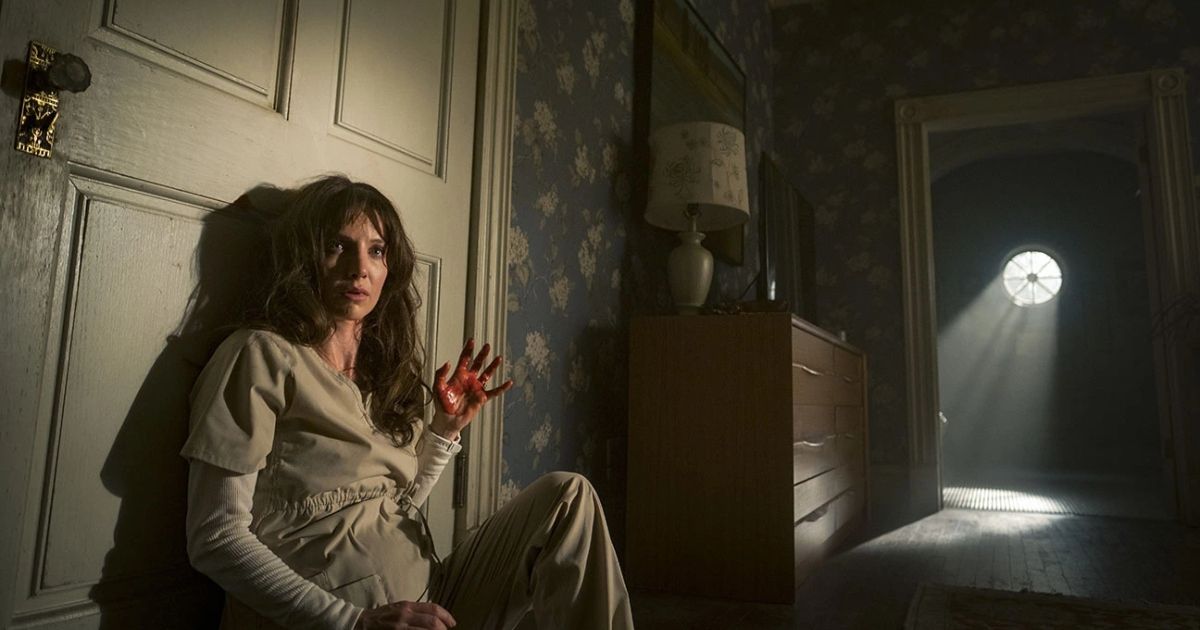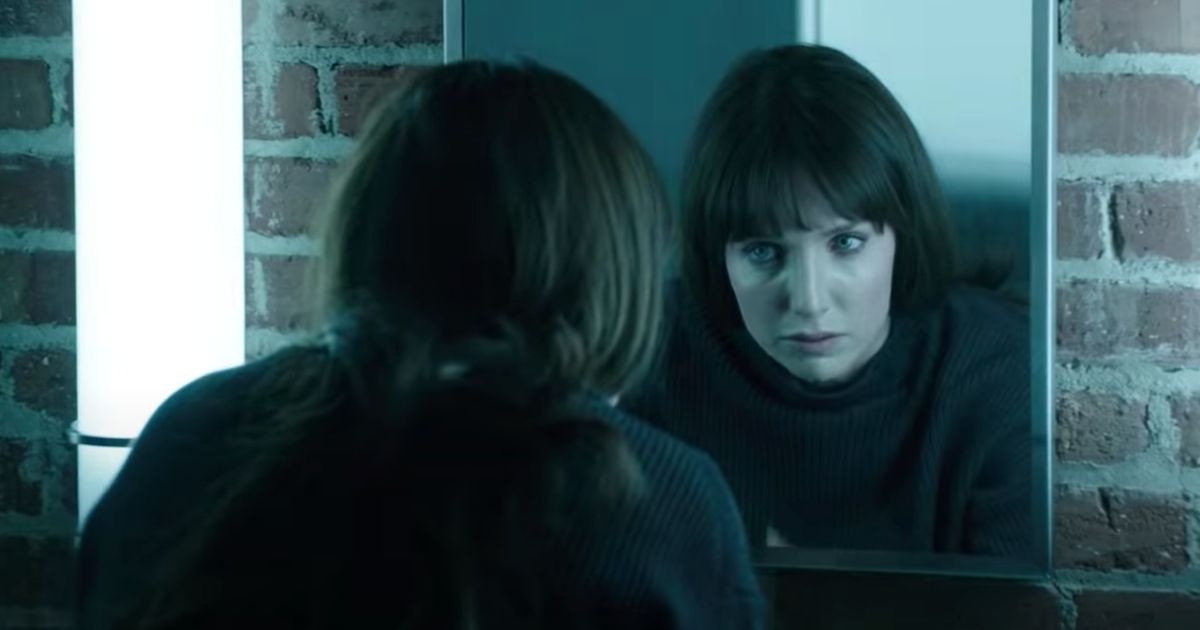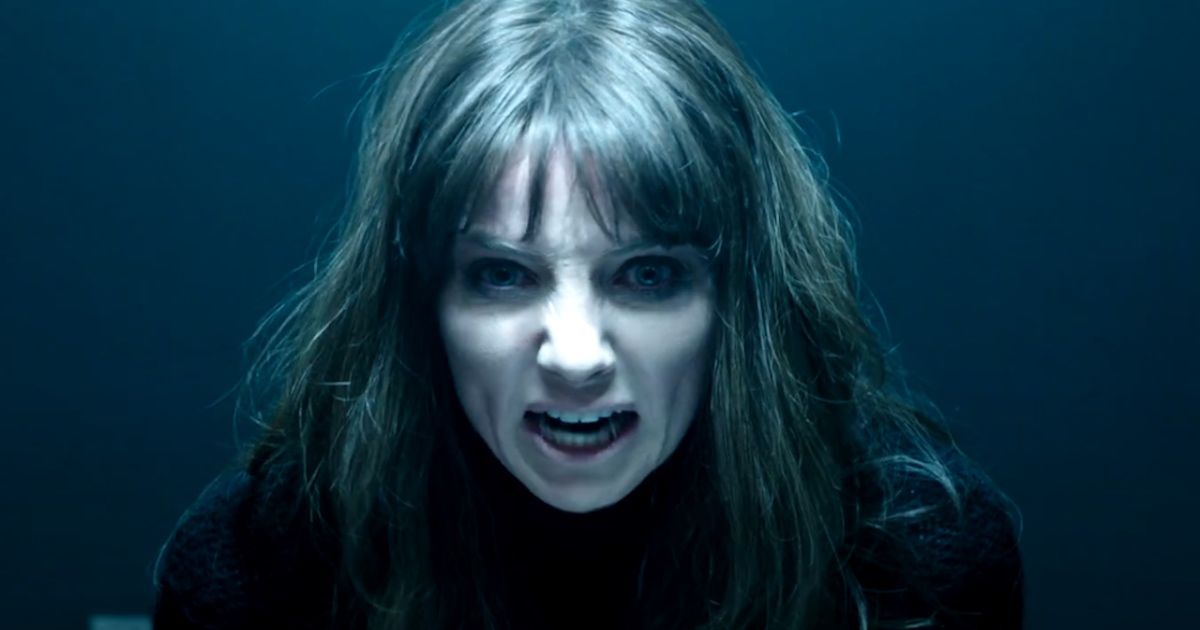Malignant hit theaters and HBO Max in September 2021. With a mix of reviews ranging from good to bad, it was unfortunately swept under the rug by those who couldn't see more deeply into the film. From its cinematography to its acting, and even the subtle foreshadowing, James Wan's movie is arguably one of the most underrated horror films from 2021.
Malignant successfully mixes shocking visions, gruesome murders, revenge, and a parasitic twin. Madison Mitchell, played by Annabelle Wallis — whom you may remember as Grace from Peaky Blinders — finds herself experiencing haunting visions of grisly murders. As she works with her sister Sydney (Maddie Hasson) and the police to solve these crimes, she ends up uncovering the horrific truth about the first nine years of her life when she was plagued by the parasitic twin, Gabriel, whom she referred to then as the Devil.
Dubbed the "cult horror film of 2021" by The Los Angeles Times, Wan's Malignant explores a unique take on a brutal killer who, like cancer, grows and infects her life until it tries to consume her completely. While the film may not have initially been a hit with audiences, between the use of visuals, the slow burn that leads to utter bloodbath, Wallis' acting, and the use of cancer as evil, Malignant deserves the highest recognition within the horror genre. Here's a closer look at why it's one of the most underrated horror films from 2021.
Wan Doesn't Just Rely on Jump Scares
When you think horror films, jump scares, gore, and/or serial killers typically come to mind. For Wan and Malignant, however, his most affective horror films are a result of his use of visuals to set the tone for each scene. Thanks to visual effects and camerawork, Wan can highlight his trademark style of suspense-building. Throughout the film, his use of cinematography ranges from film angles to subtle foreshadowing, both of which subtly enhance the suspense of the film.
During an early scene in Malignant with Madison, she is shown running through her house in fear. During this scene, the camera gives a bird's eye view of Madison fleeing for her life. This point of view helps create suspense as she is running room to room. In another scene, Wan uses a mirror as a subtle hint that Gabriel is a part of Madison. When she is at the police station, she gets a call from Gabriel, who uses electricity to communicate. During that call, the camera is fixed on Madison's face, but the back of her head is also a focal point of the screen as its unobstructed view is shown in the mirror.
Additional features like red lighting during scenes of bloodshed, the use of defined shadows, and the appearance of blood from Madison's head wound appearing after Gabriel's kills all work together to enhance Malignant's overall suspense. Wan could have had Gabriel appear in the form of a jump scare, but instead he kept his identity secret to further help the viewer understand that without Madison, there is no Gabriel.
The Film’s Third Act: From Thriller to Bloodbath
Over the course of the first and second acts of Malignant, we saw the slow build thanks to the visuals, but what Wan does best is merging different kinds of scare tactics in his films. As Gabriel's kill count grows, his murders become more gruesome and gory. The first kill — the husband — is shown off-screen and does not include blood. The next victim — Dr. Weaver — is attacked and beaten to death with a trophy, which Gabriel later fashions into a sort of sharp knife. Blood splatter is shown during this murder, and then again when the police revisit the crime scene. After that, the next two doctors were murdered in a grisly fashion.
However, it isn't until the final twenty minutes of Malignant that the ultimate bloodshed is unveiled. Gabriel pushes through Madison one more time, this time fully and seemingly inhabiting her body. First, they work their way through the holding cell where Madison was placed. Next, they work their way through the police officers and detectives. Though the rooms are dark, between the sound effects, blood splatter, and bodies falling, the impact of the bloodshed is dutifully implied.
Annabelle Wallis's Performance as Madison Mitchell
Speaking of dutifully implied, let's take a look at Wallis' superior acting. Wallis has had a few reoccurring roles in TV series and in films, but none shine as brightly as her portrayal of Madison Mitchell in Malignant. It's not so much her dialogue or even big emotional scenes, but rather her arc from a weak woman in an abusive relationship, desperate for a blood connection, to be able to trust her mind to finally suppress Gabriel into a metaphorical jail cell of his own. This arc required Wallis to, very slowly, learn how to stand up for herself.
At the beginning of Malignant, Madison comes home from work early due to some pregnancy discomfort, and finds her husband in their bedroom watching TV. From that opening conversation, you learn Maddy's husband is perhaps a recovering alcoholic with rage issues, which he exhibits by slamming Maddy's head against their wall. Unfortunately for him, and everyone else, this act is ultimately what awoke Gabriel from his suppressed, dormant state.
As the movie continues, we discover Maddy is adopted and longs for a blood relationship with someone. She had also suffered multiple miscarriages and, besides her adoptive sister, Syndey, she had no one. This vulnerable state is what Gabriel feeds on. He is able to hijack her mind and make her think she is living her own life when, in fact, he is off on his revenge. For Wallis to convince the audience of this until the moment the twist is revealed is a perfect example of superior acting.
Comparing Gabriel to Cancer
Evil has been portrayed in many ways in many different films over the years. For Malignant, Gabriel is compared to cancer, a force that was dormant until it sought to completely consume its host. A tumor of sorts that cannot survive without a physical body. In fact, these ideas are explicitly stated in a video from Dr. Weaver, which Syndey found after visiting Simion Research Hospital in search of answers. In the video, Dr. Weaver explains that Gabriel is, "a result of an absorption in utero growing in sync with the patient (Emily aka Maddy)." She goes on to say, "Gabriel has his its own heart, spine, and hands — an extreme version of a teratoma, a tumor consisting of tissues, hair, teeth, muscles, and bones. But more specifically, in this case, it's a parasitic twin." Gabriel is the underdeveloped twin who, without Emily/Maddy's body, cannot survive. Like a parasite, indeed, cancer, it feeds off the host until it's all-consuming. Thanks to Maddy's weakened state, Gabriel is able to resume control of her like he used to have when she was younger.
This comparison offers a unique take on what is it to be an antagonist in a film. Instead of having Gabriel be an evil lost twin that Maddy never knew of, Gabriel is a twin that is a part of Maddy, and even though she was able to trap him, the threat of him is always there. In his last line in Malignant, he reminds Maddy that she can't lock him away forever. She responds that she knows, but that, next time, she will be bettr prepared for him. Gone is the weak Maddy, and what has awakened in Gabriel's place is the inner strength she had all along — she just needed a reason to get there.





